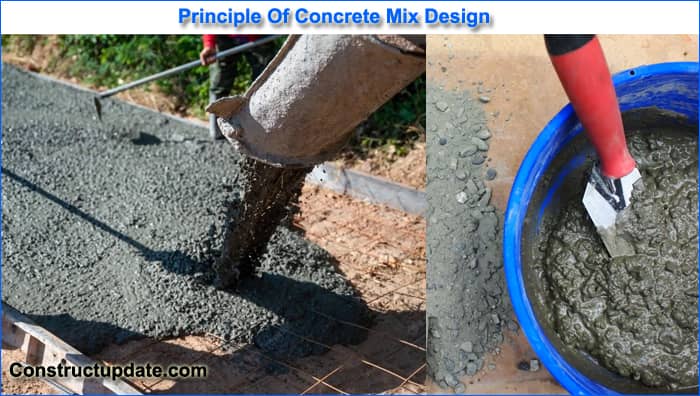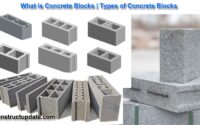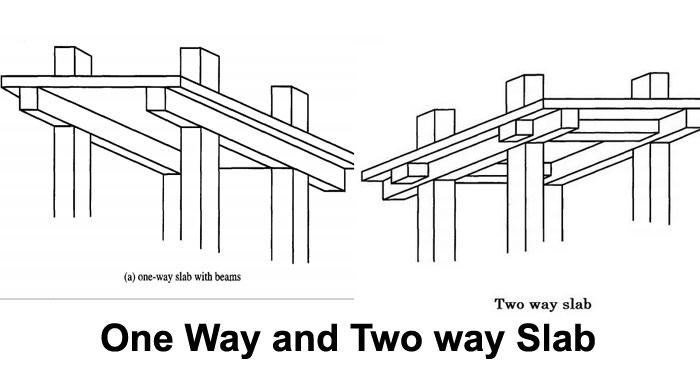Principle Of Concrete Mix Design | Concrete Mix Design Principles
Introduction
Concrete mix design is the process of choosing appropriate concrete materials and figuring out their proportions with the goal of generating concrete with the necessary strength, durability, and workability as cheaply as feasible. The performance requirements for concrete in its two states-plastic and hardened-determine the proportioning of its ingredients. The plastic concrete cannot be properly poured or compacted if it is not workable. As a result, the workability property assumes critical significance.
The quality and quantity of cement, water, and aggregates; batching and mixing; placement, compaction, and curing are only a few of the variables that affect hardened concrete’s compressive strength, which is typically regarded as a measure of its other attributes. The cost of the labor, equipment, and supplies goes into the price of the concrete. Because cement is more expensive than aggregate, there are variances in material costs; as a result, it is important to create a mix that is as lean as feasible. Technically speaking, rich mixes may result in high shrinkage and cracking in structural concrete as well as the evolution of high hydration heat in mass concrete, both of which may result in cracking.
What is Concrete Mix Design
A technique called mix design establishes the ratios of cement, water, fine particles, and coarse aggregates to produce concrete with the necessary strength, workability, and durability at the lowest possible cost.

Factors Dependent on Mix Design
Numerous variables are taken into consideration while designing a concrete mix, all of which significantly influence the final product, concrete, and all of its properties. So carefully maintaining it to the right level while taking into account all of these aspects would significantly improve the concrete’s quality and strength. These are a few of these factors that have been mentioned:
- Grade of Cement
- Size and shape of aggregates
- Grading Zone of Aggregate
- Water absorption by the aggregate
- The specific gravity of the materials
- Type of Admixture added
- Slump value of the concrete
- W/C Ratio of concrete
- Degree of supervision provided
- Method of transportation of concrete
- Concrete Techniques (such as Tremie or underwater concreting).
Concrete mix design Requirements
The criteria that guide the selection and sizing of mixed ingredients are as follows:
- The needed minimum compressive strength for structural reasons
- The essential workability for complete compaction using the available compacting equipment.
- Maximum cement content or water-to-cement ratio to provide sufficient durability for the specific site circumstances.
- Maximum cement content to prevent temperature cycle-related shrinkage cracking in mass concrete.
Types of Mixes
A. Nominal Mixes
Cement, fine, and coarse aggregate proportions were previously specified in concrete requirements. Nominal mixes are those with a predetermined cement-to-aggregate ratio that guarantee acceptable strength. These are straightforward and, in most cases, have a stronger margin than what is provided. However, the nominal concrete for a given workability varies greatly in strength because of the diversity of mix elements.
B. Standard mixes
The nominal mixes of fixed cement-aggregate ratios (by volume) might be either under or over-rich in terms of cement content. The minimal compressive strength has so been incorporated into numerous requirements. They are known as standard mixes.
The concrete mixes are divided into a number of grades, including M10, M15, M20, M25, M30, M35, and M40, according to IS 456-2000. The mix is identified by the letter M in this designation, and the mix’s specified 28-day cube strength is indicated by the number in N/mm2. The mix proportions for classes M10, M15, M20, and M25 are around (1:3:6), (1:2:4), (1:1.5:3), and (1:1:2), respectively.
C. Designed Mixes
With the exception of the minimum cement content, which can be set, the concrete producer determines the mix proportions while the designer specifies the performance of the concrete in these mixtures. This is the most logical method for choosing the mix proportions when considering particular materials that have more or less distinctive properties. The method produces concrete with the right qualities in the most cost-effective manner. The intended mix, however, is not a rule of thumb because it cannot provide the right mix proportions for the required performance.





